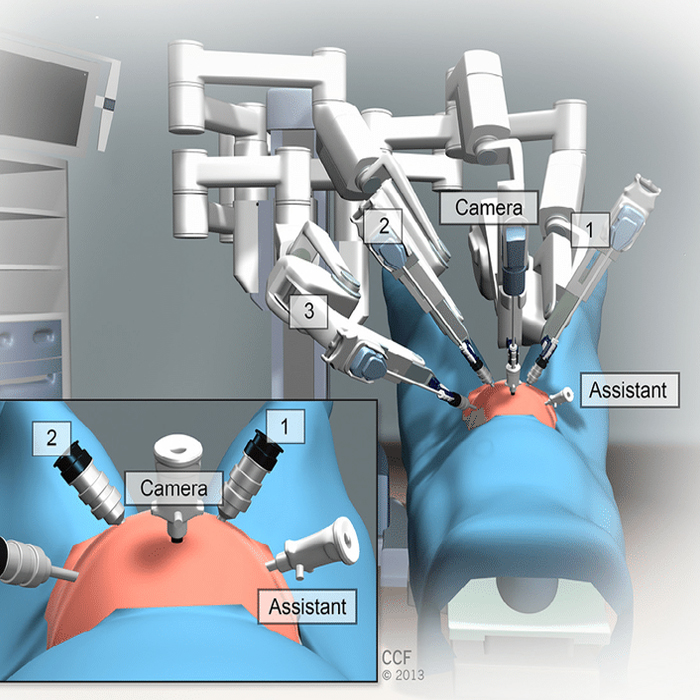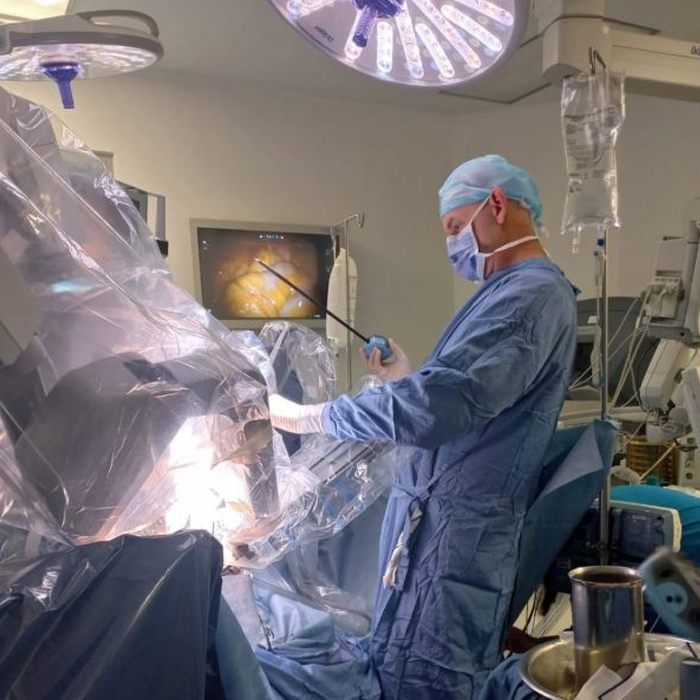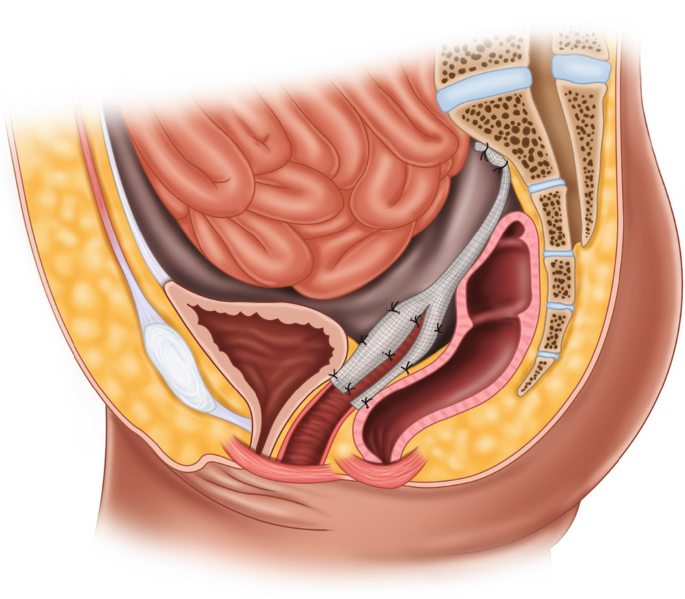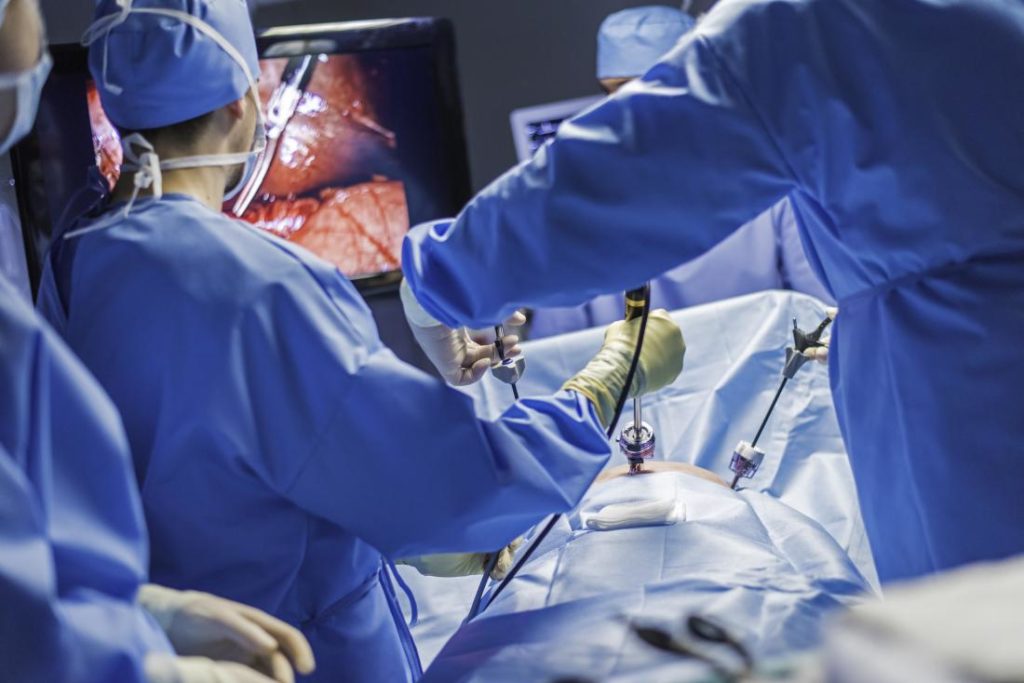
Robotic-assisted Sacrocolpopexy
Robotic-assisted Sacrocolpopexy in Jalandhar
Robotic-assisted Sacrocolpopexy: Risks, Complications, Indications, Procedure , Post Procedure Care
Robotic-assisted sacrocolpopexy is a surgical procedure used to correct pelvic organ prolapse, particularly of the vaginal vault (top of the vagina) or uterus. This minimally invasive technique uses robotic technology to assist the surgeon in performing the operation with greater precision and control.
CONTACTPurpose of Robotic-Assisted Sacrocolpopexy
- Treatment of Pelvic Organ Prolapse: It is primarily performed to treat pelvic organ prolapse, where pelvic organs (like the bladder, rectum, or uterus) fall out of their normal position due to weakness in the pelvic floor muscles.
- Restoration of Normal Anatomy: The procedure aims to restore the normal position of the pelvic organs and improve symptoms such as urinary incontinence, bowel issues, and pelvic discomfort.
How Robotic-Assisted Sacrocolpopexy is Performed
1. Preparation:
- The patient is placed under general anesthesia. Small incisions are made in the abdomen.
2. Robotic Setup:
- 2. The surgeon operates from a console, controlling robotic arms that hold surgical instruments and a high-definition camera.
3. Procedure:
- The surgeon attaches a synthetic mesh to the top of the vagina or uterus.
- The other end of the mesh is secured to the sacrum (a bone at the base of the spine).
- This creates a support structure to hold the pelvic organs in their correct position.
4. Completion:
- The incisions are closed, and the patient is taken to recovery.
Advantages of Robotic-Assisted Sacrocolpopexy
1. Minimally Invasive:
- Smaller incisions compared to traditional open surgery, resulting in less pain and quicker recovery.
2. Precision:
- The robotic system provides enhanced precision, flexibility, and control.
3. Reduced Blood Loss:
- Less blood loss during surgery.
4. Shorter Hospital Stay:
- Patients typically have a shorter hospital stay and faster return to normal activities.
Recovery
1. Hospital Stay:
- Most patients stay in the hospital for 1-2 days.
2. Activity Restrictions:
- Avoid heavy lifting and strenuous activities for several weeks.
3. Follow-Up:
- Regular follow-up appointments to monitor healing and address any concerns.
4. Symptoms Improvement:
- Many patients experience significant improvement in prolapse symptoms and quality of life.
Who is a Candidate?
Robotic-assisted sacrocolpopexy is typically recommended for women with significant pelvic organ prolapse who have not had success with non-surgical treatments. It is suitable for patients seeking a minimally invasive option with potentially quicker recovery times.
If you're experiencing signs, take into account consulting with our specialist Dr. Deepak Chawla in Jalandhar, Punjab to explore personalised remedy options tailored to your needs.







